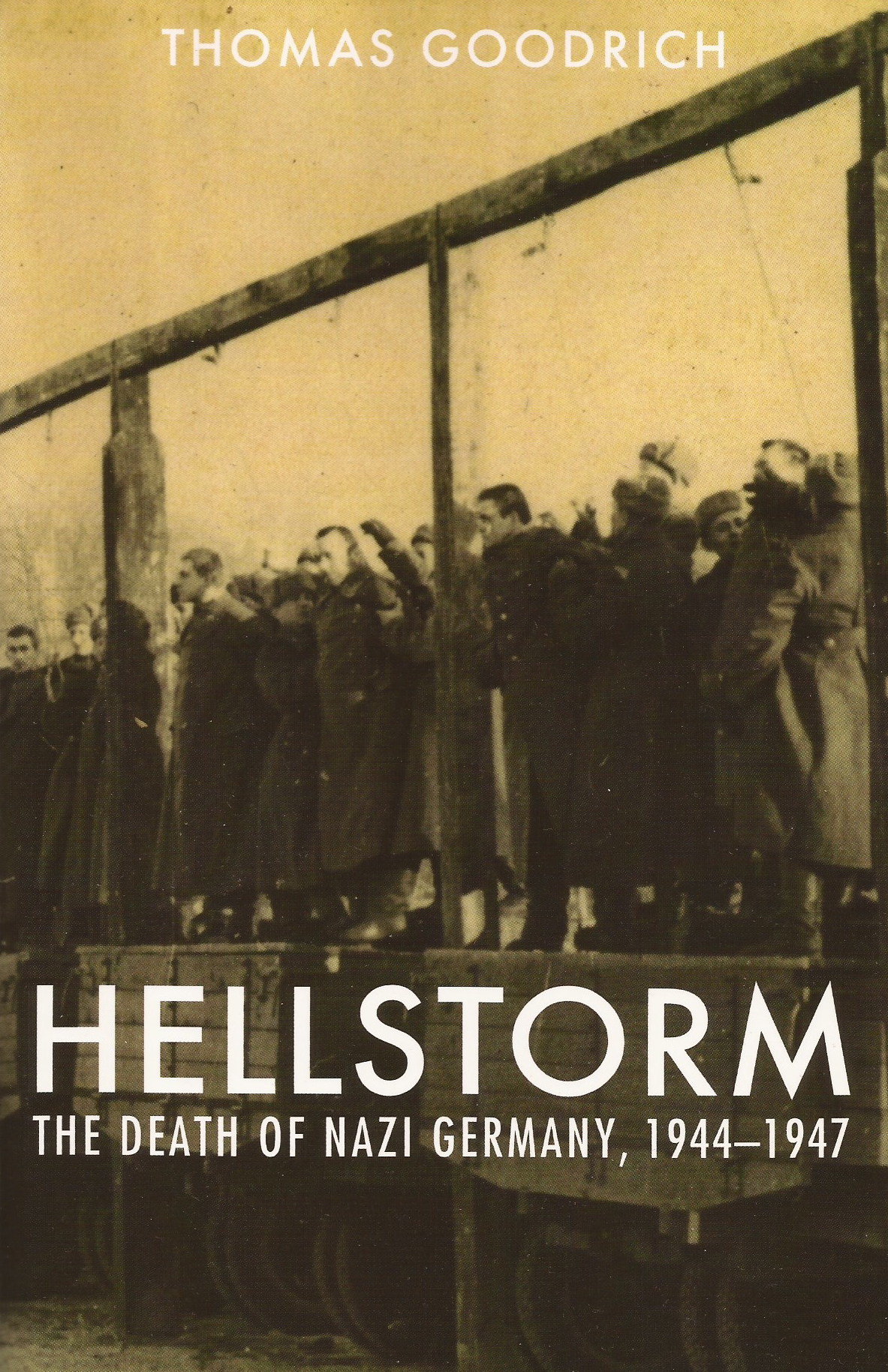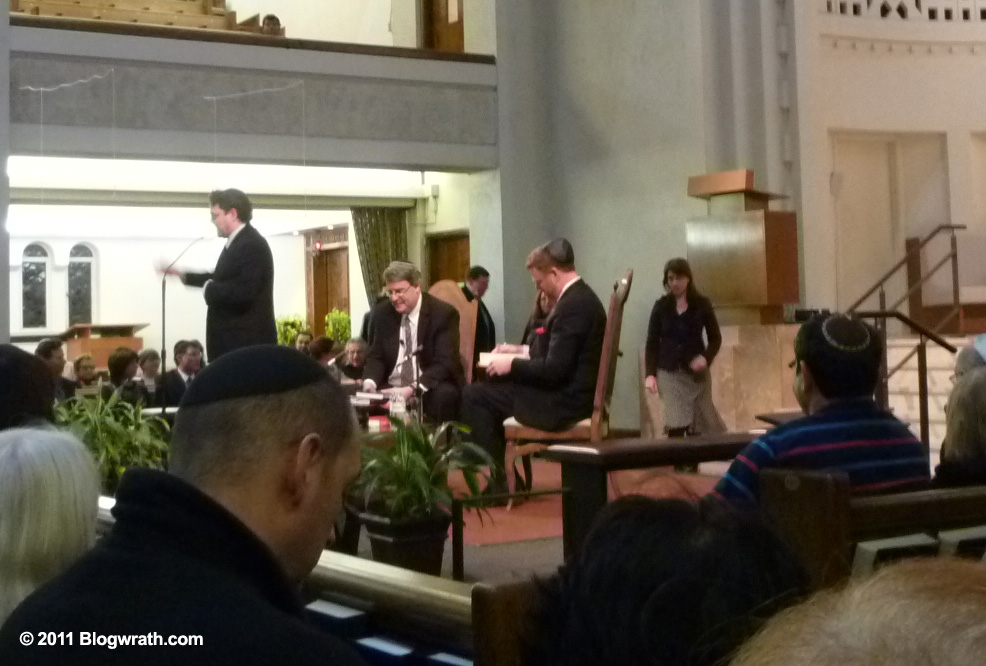In almost any war one side can be dishonestly demonized even by a truthful enumeration of its crimes, if the crimes of its adversaries are suppressed. —Irmin Vinson
Excerpted from Thomas Goodrich’s 2010 book
Hellstorm:
The Death of Nazi Germany
(1944-1947)
Crescendo of destruction
Roosevelt slapped a crippling embargo on the Reich’s ally, Japan, in hopes of provoking an attack and slipping into the war via the “back door.” When the Japanese, facing slow strangulation, dutifully responded at Pearl Harbor in December 1941, it was Roosevelt dream come true. Later, when his Secretary of Treasury, Henry Morgenthau, proposed a plan to pastorialize Germany upon victory, thereby assuring the death of millions, Roosevelt was its strongest supporter.
“I would like to see the Germans on the breadline for 50 years,” the president admitted in private.
♣
In early February 1945, leaders of the three most powerful nations on earth assembled a final time at Yalta in the Soviet Crimea. Despite the obvious dissimilarities of the men, intellectual as well as physical, each shared a characteristic with the other that shrank into insignificance all outer contradictions—all three harbored a inveterate hatred of not only Adolf Hitler and Nazism, but Germans and Germany.
At a meeting with Churchill at Casablanca in 1943, Roosevelt declared that nothing short of “unconditional surrender” would be accepted from Germany. Thus, by removing any possible latitude Hitler might have had for negotiation, the American president’s pronouncement insured that not only would Germany fight to the death, but it also guaranteed that hundreds of thousands of Allied airmen and soldiers would perish as well. Additionally, that such a protracted war would enable the Red Army to reach and no doubt enslave much of Europe seemed a foregone conclusion.
When Soviet forces invaded Poland in 1939, one of Stalin’s first moves was to round up and execute upwards of 15,000 army officers and intellectuals, thereby removing in one stroke much potential opposition. Well aware of his past, nervous about the impact his future acts in Europe would have upon a squeamish British public, desperate to hold an unnatural alliance together, Churchill’s government tried mightily to cover for the bloody behavior of their communist ally. Ran a secret memo of the British Department of Intelligence to high-ranking civil servants and opinion-molders in the press:
We cannot reform the Bolsheviks but we can do our best to save them—and ourselves—from the consequences of their acts. The disclosures of the past quarter of a century will render mere denials unconvincing. The only alternative to denial is to distract the public attention from the whole subject. Experience has shown that the best distraction is atrocity propaganda directed at the enemy… Your cooperation is therefore earnestly sought to distract public attention from the doings of the Red Army by your wholehearted support of various charges against the Germans… which have been and will be put into circulation by the Ministry.
Let anyone doubt Stalin’s intentions once his legions gained control of Germany, the reality was made crystal clear at the Teheran Conference in 1943. Lifting his glass of vodka for the “umpteenth toast,” the communist leader suddenly announced, “I propose a salute to the swiftest possible justice for all of Germany’s war criminals—justice before a firing squad. I drink to our unity in dispatching them as fast as we capture them, all of them, and there must be at least 50,000 of them.” When Churchill, well into his cups, angrily protested—“The British people will never stand for such mass murder without a proper trial!”—Stalin smiled, his eyes twinkled and overall he seemed “hugely tickled.”
“Perhaps,” the American president interrupted, “we could say that instead of summarily executing 50,000 we should settle on a smaller number. Shall we say 49,500?”
Despite Stalin’s well-earned reputation as the greatest mass murderer in history, Franklin Roosevelt was a staunch supporter and admirer of the dictator and defended him at every turn. In an effort to put a friendly, folksy face on the Russian premier and convince Americans that he was a “magnificent” and “gallant” ally, Roosevelt began referring to Stalin as “Uncle Joe.”
“He is a man who combines a tremendous, relentless determination with a stalwart good humor,” explained the president of the American public. “I believe he is representative of the heart and soul of Russia; and I believe that we are going to get along very well with him and the Russian people—very well indeed.”
The eyes of the world were now upon Yalta, said the prime minister, and what the “Big Three” accomplished during talks over the next few days would affect mankind for a hundred years.
Another subject Stalin was explicit about at Yalta concerned the return of over two million Soviet citizens who had either fled to Germany to avoid persecution at home or who had joined the enemy to fight against communism. Again, to this demand Roosevelt promised his complete cooperation. But of course, the main topic of discussion at Yalta was the fate of their mutual enemy, or, as Churchill grimly phrased it, “The future of Germany, if she had any.”
Once victory was complete, the three leaders agreed that the former Third Reich would be carved up like the evening’s meal and her people marched off as slaves to the Soviet Union. Although Roosevelt had solemnly announced earlier that “the united Nations do not traffic in human slavery,” when Stalin proposed the plan, the president called it “a healthy idea.”
Another subject broached at Yalta, albeit a seemingly minor one, was Stalin’s request for the massive bombing of eastern Germany to smooth the way for the Red Army’s final sweep across the Reich. Eager to demonstrate to his ally that Britain, and especially the RAF, was yet a force to be reckoned with, Churchill quickly agreed.
When the Yalta talks were finally concluded on February 11, the three Allied leaders signed a joint statement for press release, then bid each other a fond adieu.
____________________________
Educate yourself about the Holocaust perpetrated on the German people by the Allied forces that the mainstream media has covered up for nearly seventy years.
Hellstorm is still available from the publisher.
____________________________
My 2 cents:
As described by Solzhenitsyn:
In Yalta Churchill and Roosevelt had signed the agreement to repatriate all Soviet citizens, and especially the military, without specifying whether the repatriation was to be voluntary or enforced: How could any people on earth not be willing to return to their homes? The nearsightedness of the West was condensed in what was written at Yalta.
The English turned over the Soviet army command a Cossack corps of forty to forty-five thousand men which had fought its way to Austria from Yugoslavia. The extradition was carried out with perfidy which is characteristic of British diplomatic tradition. The Cossacks did not grow suspicious when they were asked to turn in their weapons, on the grounds that this was necessary in order to standardize their equipment. On May 28… [Solzhenitsyn describes in this paragraph of his Gulag Archipelago how the Allied forces extradited these Russian people, against their will, to Stalin.]
They could not even shoot or stab themselves to death, since all their weapons had been taken away. Some jumped off the high viaduct into the river or onto the stones. The hearts of the British were not troubled, nor were their democratic minds. British tanks and soldiers arrived. The British soldiers started beating them with rifle butts and clubs, grabbing them and throwing them into the trucks, including the wounded, as if they were packages. Entire families sought death by throwing themselves into the river. Meanwhile, the British units in the neighborhood pursued and shot at the fugitives. (The cemetery where the people who were shot or trampled to death and buried still exists in Lienz.)
But even that was only the beginning. During all of 1946 and 1947 the Western allies, faithful to Stalin, continued to turn over to him Soviet citizens, former soldiers as well as civilians. It did not really matter who they were as long as the West could get rid of this human confusion as quickly as possible. People were extradited from Austria, Germany, France, Denmark, Norway, and Sweden, from the American occupation zones, and from the territory of the United States as well.
It goes without saying that most of the deportees died in the Soviet Gulag. So who was the real monster, the three Allied leaders or the German chancellor?

